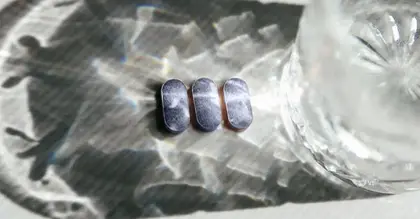Summary
Commonly reported side effects of palifermin include: arthralgia, dysesthesia, edema, hyperesthesia, hypoesthesia, increased serum amylase, paresthesia, pruritus, skin rash, tongue edema, dysgeusia, erythema of skin, mouth discoloration, and tongue discoloration. Continue reading for a comprehensive list of adverse effects.
Applies to palifermin: intravenous powder for solution.
Serious side effects of Palifermin
Along with its needed effects, palifermin may cause some unwanted effects. Although not all of these side effects may occur, if they do occur they may need medical attention.
Check with your doctor or nurse immediately if any of the following side effects occur while taking palifermin:
More common
- Fever
Rare
- Skin rash (severe)
Other side effects of Palifermin
Some side effects of palifermin may occur that usually do not need medical attention. These side effects may go away during treatment as your body adjusts to the medicine. Also, your health care professional may be able to tell you about ways to prevent or reduce some of these side effects.
Check with your health care professional if any of the following side effects continue or are bothersome or if you have any questions about them:
More common
- Bad, unusual, or unpleasant (after) taste
- blurred vision
- burning, crawling, itching, numbness, prickling, "pins and needles", or tingling feelings
- change in taste
- difficulty with moving
- discoloration of the tongue
- dizziness
- flushing or redness of the skin
- headache
- increased sensitivity to pain
- increased sensitivity to touch
- itching skin
- muscle pain or stiffness
- nervousness
- pain
- pain in the joints
- pounding in the ears
- rash (mild)
- slow or fast heartbeat
- swelling
- thickening of the tongue
- tingling in the hands and feet
- unusually warm skin
Incidence not known
- redness or swelling of the vagina
- redness, swelling, or pain of the skin
- scaling of the skin on the hands and feet
- ulceration of the skin
For Healthcare Professionals
Applies to palifermin: intravenous powder for injection.
General
The most commonly reported side effects included all grades of elevated serum amylase, rash, treatment-emergent infections, and fever.[Ref]
Gastrointestinal
Peak amylase and lipase increases occurred during cytotoxic therapy, and usually returned to baseline by the day of hematopoietic stem cell infusion.
Most taste and tongue disorders were reversible and mild to moderate in severity, usually occurred within the first 6 days of treatment, and typically lasted 5 days.[Ref]
Very common (10% or more): All grades of elevated serum amylase (up to 62%), grades 3 and 4 elevated serum amylase (up to 38%), all grades of elevated serum lipase (up to 28%), mouth/tongue thickness/discoloration (up to 17%), grades 3 and 4 elevated serum lipase (up to 11%)
Common (1% to 10%): Oral fungal infection, oral paresthesia
Frequency not reported: taste disorder, tongue disorder
Postmarketing reports: mouth edema, tongue bumps, tongue edema, tongue redness[Ref]
Dermatologic
Very common (10% or more): Rash (up to 62%), pruritus (up to 35%), erythema (up to 32%)
Common (1% to 10%): grade 3 skin rashes
Postmarketing reports: face edema, hand-foot syndrome, palmar-plantar erythrodysesthesia syndrome, skin hyperpigmentation[Ref]
Immunologic
Very common (10% or more): Treatment-emergent infections (up to 50%), sepsis/septic shock (up to 12%)
Common (1% to 10%): Herpes virus infection, immunogenicity/antibody positivity[Ref]
Approximately 50% of patients reported treatment-emergent infections when this drug was given 3 days prior to and 3 days after treatment with melphalan; 47% of patients given this drug 3 days prior to treatment with melphalan reported infections, and 25% of patients given placebo with melphalan reported infection.[Ref]
Other
Very common (10% or more): Fever (up to 39%), pain (up to 16%)[Ref]
Nervous system
Very common (10% or more): Taste altered (up to 16%), dysesthesia (up to 12%), hyperesthesia (up to 12%), hypoesthesia (up to 12%), paresthesia (up to 12%)[Ref]
Musculoskeletal
Very common (10% or more): Arthralgia (up to 10%)[Ref]
Cardiovascular
Very common (10% or more): Edema (up to 28%)
Postmarketing reports: Edema on the soles, palmar edema[Ref]
Genitourinary
Postmarketing reports: Vaginal edema, vaginal erythema[Ref]
Ocular
Postmarketing reports: Cataracts[Ref]
Hypersensitivity
Postmarketing reports: Allergic reactions, anaphylactic reactions[Ref]




